


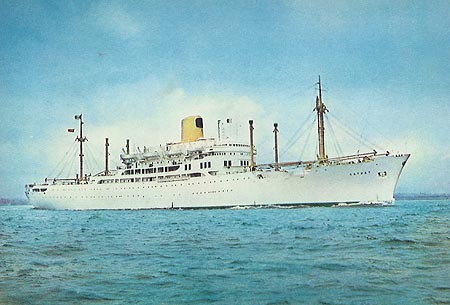
ss
Cathay
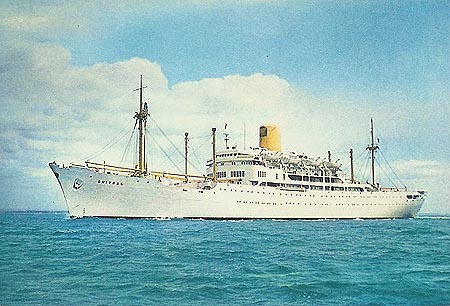
A J.Arthur Dixon postcard of Chitral, c1961
ss Chitral
The Early Years
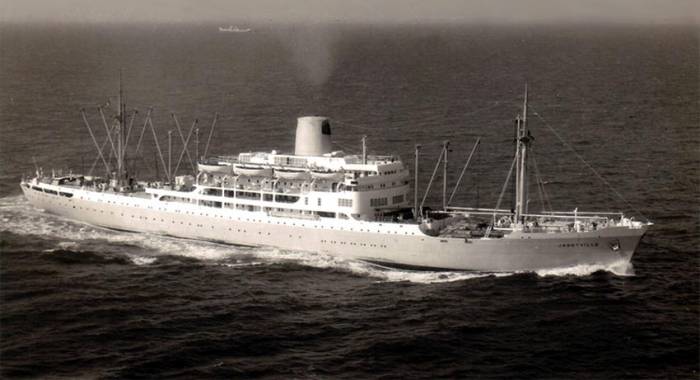
Jadotville on sea trials, June 18, 1956
Jadotville
departed for her maiden voyage,
from
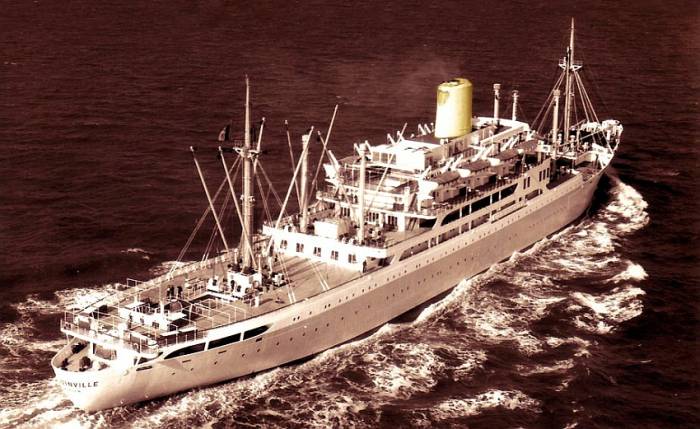
Baudouinville's
maiden voyage, from
The two ships had comfortable outside cabins, initially for 274 passengers, and six holds with a capacity of 532,500 cu.ft of general cargo, and 16,600 cu.ft of refrigerated.
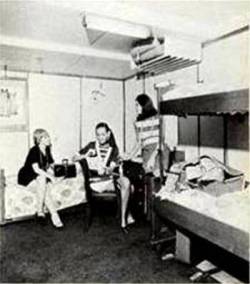
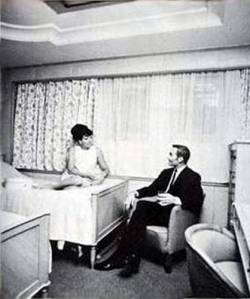
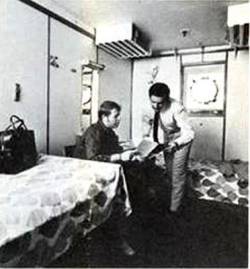
Passenger accommodation - three and two-berth cabins.
Passenger facilities included a spacious lounge and dance floor, an elegant smoking room and bar, a library and writing room, a verandah café located aft, overlooking the pool and aft sports decks. There was also the shop and hairdressing salon, a cinema, and a children’s playroom. The dining saloon was the full width of the ship.
Under P&O Ownership
Both ships were given a minor refit and their port of
registry changed to London. Passenger accommodation was reduced to 231 one
class, in keeping with company policy. Flying the P&O house flag, Chitral
departed Tilbury on 2nd March 1961, outward bound for
.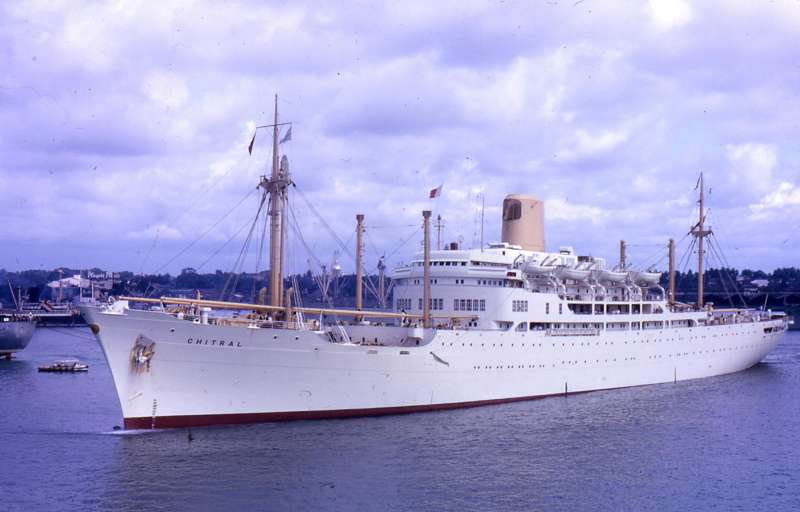
Chitral, refitted and under P&O ownership.
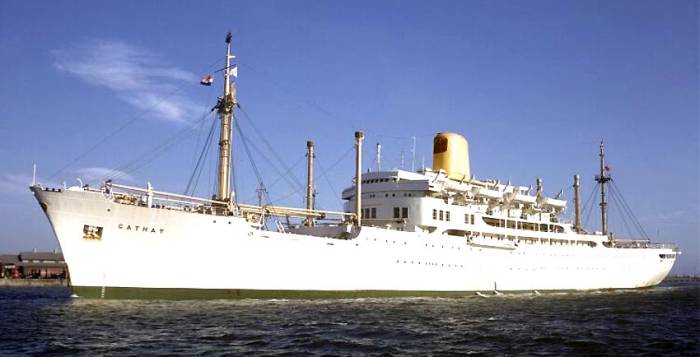
Cathay, refitted and under P&O ownership.

Chitral in the Suez Canal. Photo: Michael Sutcliffe
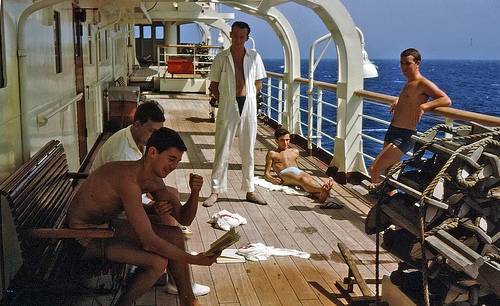
Chitral - off duty officers. Photo: John Temple
Canberra and Chitral dressed overall at Yokohama.
Chitral arriving Hong Kong, with a sampan and the Star Ferry. Photo: Michael Sutcliffe
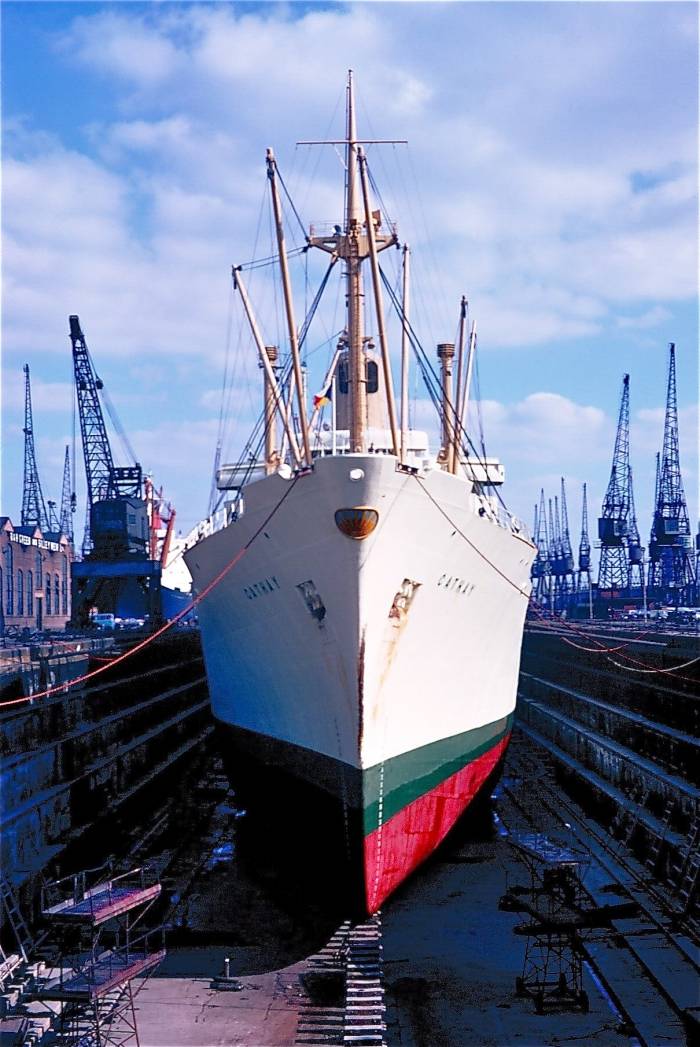
Cathay in the King George V drydock, London 1969. Photo:Michael Sutcliffe
Note: The dry docks and ship repair works now lie under the City Airport runway.
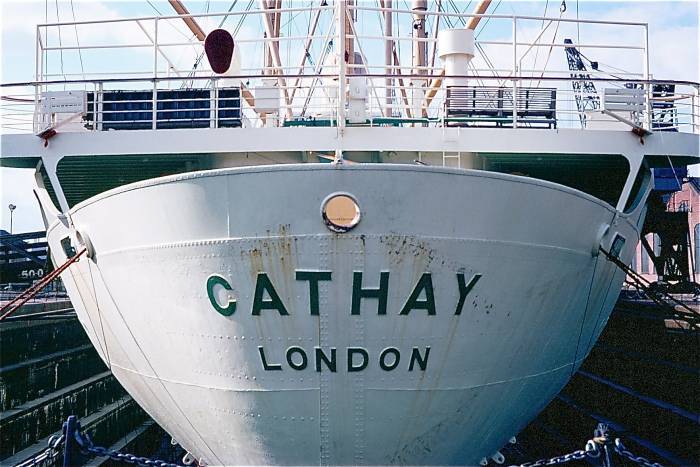
KGV drydock, London 1969. Photo:Michael Sutcliffe
Note: The dry docks and ship repair works now lie under the City Airport runway.
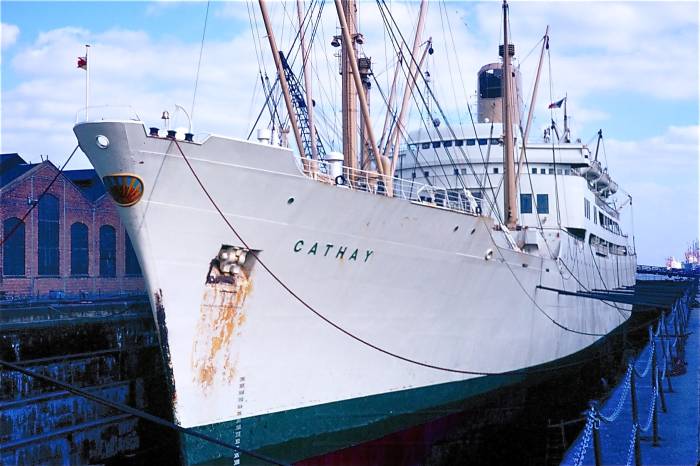
KGV Drydock, London 1969. Photo: Michael Sutcliffe.
Although popular with the fare-paying
public, the closure of the
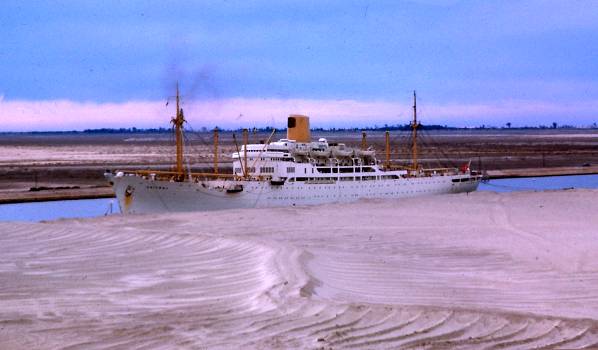
Chitral was also withdrawn from service and laid up, awaiting
sale to new owners - which proved to be unsuccessful. Consequently, in the
summer of 1970, she was deployed to Genoa, in Italy, from where she conducted a
number of Mediterranean cruises. Finally, the decision was made to transfer her
to
the Eastern & Australian Steamship Company, where her sister ship was proving to
be very popular with the Australian public.
Chitral joined
Cathay in
Eventually, the fuel price rises of the mid 1970s, together with the birth of cargo containerisation, sounded the death knell for steam turbine driven cargo/passenger ships on the Australia - Japan service.
Chitral was sold on 3rd December 1975, to the Chou Iron &
Steel Company Breakers Yards at Hualien in
Cathay finally departed
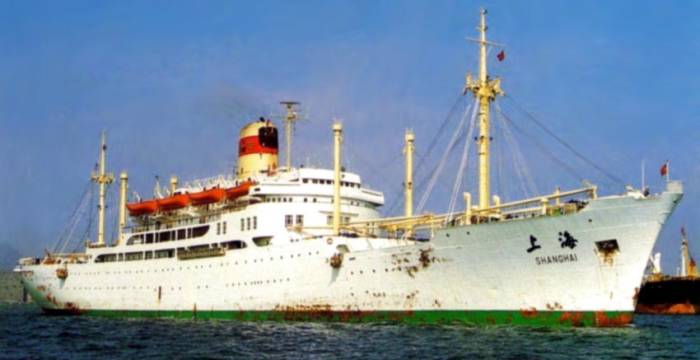
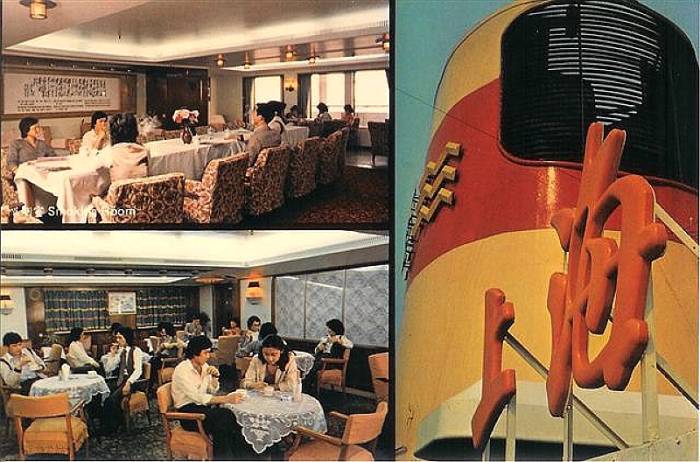


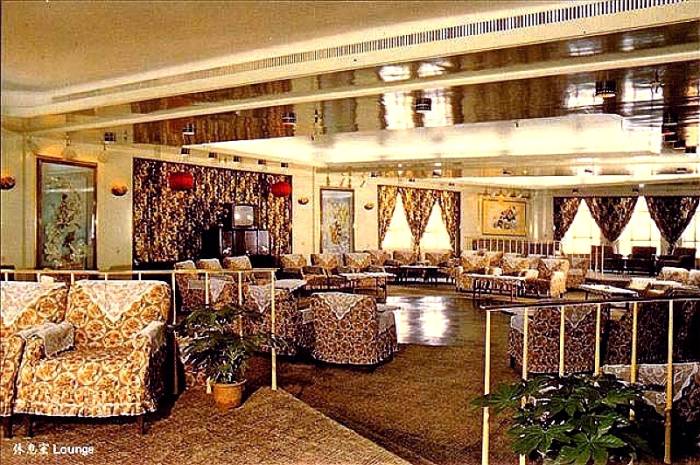

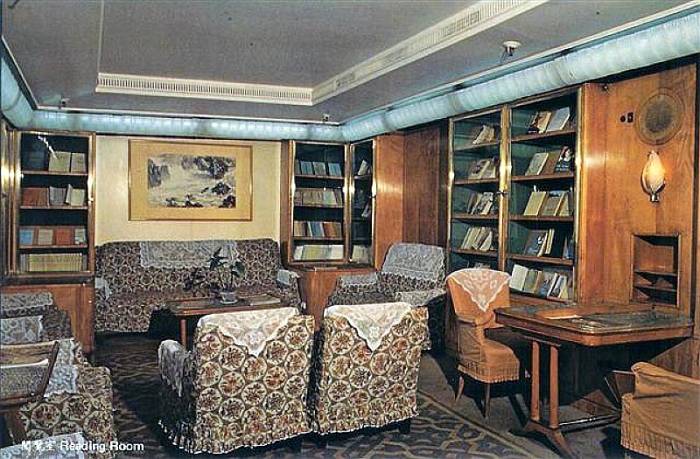
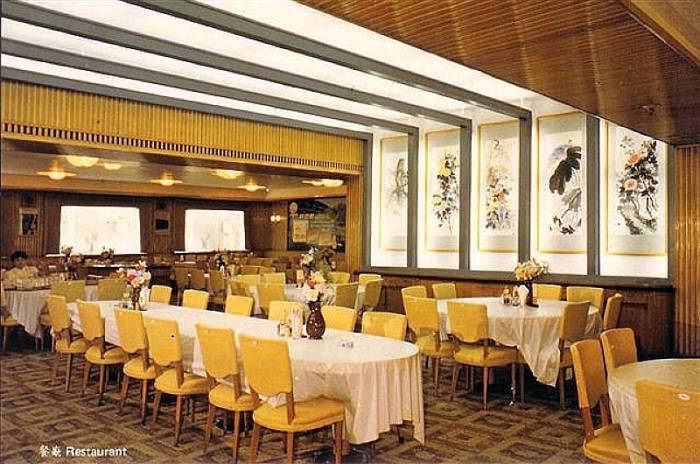
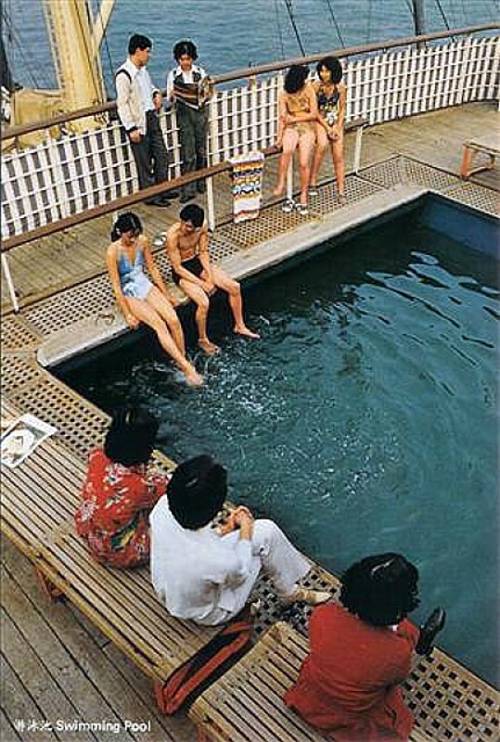
In 1996, after almost 40 years at sea, she was broken up.